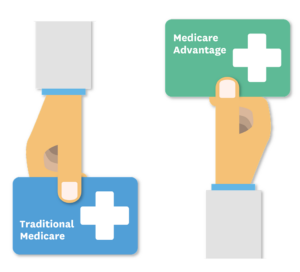A new white paper by scholars from the USC Schaeffer Center for Health Policy & Economics recommends a competitive bidding model that bases Medicare Advantage rates on market forces instead of spending in traditional Medicare.
Proposed reforms include:
- Delinking Medicare Advantage rates from traditional Medicare costs;
- Standardizing plans;
- Giving beneficiaries better information to compare plans
Medicare Advantage (MA) is highly popular, with 55% of Medicare beneficiaries—33.2 million people—enrolling in federally approved private health plans over traditional, government-run Medicare. Behind this popularity, however, is a flawed payment model that pays these private plans an average of $2,329 more per beneficiary than what spending would have been in traditional Medicare (TM). These overpayments will cost Medicare $83 billion in 2024 alone (22% more than what TM would cost to provide coverage).
“Although $13 billion of that amount is paid by Medicare beneficiaries in inflated premiums for Part B, that still leaves taxpayers on the hook for $70 billion—in a single year,” notes Paul B. Ginsburg, a senior fellow at the USC Schaeffer Center whose expertise includes service as vice chair and commissioner of the Medicare Payment Advisory Commission.
“Reforming MA starts with changing how we pay for it, but that’s only the starting point,” adds Steven M. Lieberman, a Schaeffer Center nonresident senior fellow whose background includes having held leadership roles at the Congressional Budget Office, the White House Office of Management and Budget, and the Centers for Medicare & Medicaid Services. “We need to set the product, let plans compete on price and quality, and better inform beneficiaries about their choices.”
Linking MA rates to TM spending no longer provides a sound basis for MA rates because plans enroll healthier beneficiaries and increase payments by more aggressively reporting diagnoses (upcoding).
Importantly, their competitive bidding proposal would not change TM, making it differ fundamentally from other proposals to use competitive bidding, known as “premium support,” which would have increased what TM beneficiaries pay.
Setting up a more efficient market For MA
The authors outline three interrelated elements to reform MA:
1. MA rates must be delinked from TM costs. Competitive bidding would use the bids submitted by plans to set what Medicare pays, not TM costs. Current MA payment policy was set decades ago when almost all Medicare beneficiaries remained in the traditional program. Today, substantial growth in MA enrollment coupled with a decline in TM participants skews the estimated average cost of beneficiaries in TM compared to MA. Furthermore, the current rate-setting policy assumes that all enrollees face similar health issues and costs, but that is also inaccurate.
2. Plans must be standardized. Standardizing benefits would spur more efficient bids from MA plans by creating a market where plans compete on price and quality. Standardization is essential, they explain, because otherwise, “bids could be for different products with different underlying costs, precluding meaningful comparison.”
3. Beneficiaries must be given easy-to-understand, comprehensive information to compare plans. Today, MA enrollees select from an average of 43 plans—a number that has more than doubled since 2018. While this seeming abundance of choices might sound good in the abstract, in practice it leads to confusion that hampers decision making. This is especially true since MA plans often lack easily understandable information about access to care, extra benefits, out-of-pocket costs and other factors important to comparison shopping.
“Through competitive bidding and standardizing the benefit design, plans would compete on price and quality, rather than confronting beneficiaries with an overwhelming number of choices among plans that don’t meaningfully differ and offer a confusing array of extra benefits that are hard for beneficiaries to compare across,” Ginsburg says.
To ease any disruptions, he and Lieberman suggest that Congress consider “phasing in the new benefit requirements over a multiyear period to smooth the transition.”
With beneficiaries in MA plans already outnumbering TM enrollees by 6 million and the number remaining in TM projected to continue to shrink despite overall growth in Medicare beneficiaries as baby boomers retire, Ginsburg and Lieberman emphasize the urgency of finding the political will to make these changes. Such reform is vital to ensuring that the Medicare program can be fully sustainable.
This white paper was funded by the USC Schaeffer Center and a grant from Arnold Ventures.
Sign up for Schaeffer Center news



